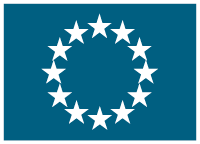Analysis of Late Antique and Byzantine Glass Mosaics
(ALABGM08)
Start date: Sep 1, 2009,
End date: Aug 31, 2011
PROJECT
FINISHED
"The main objective during the two-year fellowship is to complete the chemical characterisation of mosaics from Knossos, to conduct meta-analyses of different glass studies and to gain access to and expand my analytical study to other comparative glass samples. The compositions of glass mosaic tesserae from late antique Knossos (Crete) will be determined by energy- and wavelength-dispersive X-ray analysis in the scanning electron microscope, where sampling is possible, complemented by isotope studies on a selected set of samples (in particular lead and strontium isotopes). For comparative purposes, glass from other Cretan sites will also be characterised. The chemical analysis (base glass, colorants, opacifiers) of the glass mosaics from Knossos can potentially elucidate where, when and from what ingredients the tesserae were made by way of comparison with recognised compositional glass groups. This analytical data can thus provide insights into late antique glassmaking traditions and the movement of people and products as well as into broader political, historical and ideological aspects. Part of my project will be a meta-analysis of mosaic studies, incorporating evidence across traditional disciplinary boundaries and combining chemical and physical aspects of glass mosaics with the historical and cultural elements involved in the artistic production of the artefact. This will enable us to discern patterns in the manufacture of mosaic tesserae during the Roman and Byzantine period as regards the use of colours, materials and the underlying motives of their production. Such a comprehensive survey of late antique and Byzantine mosaics can serve as a crucial point of reference for future research, and dependent on the progress of the project, I aim to expand the proposed analytical studies to include further relevant archaeological artefacts within the course of the fellowship."
Get Access to the 1st Network for European Cooperation
Log In
or
Create an account
to see this content
Coordinator
- Linda Pialek
- University Offices, Wellington Square OX1 2JD OXFORD (United Kingdom)
Details
- 100% € 171 867,63
-
 FP7-PEOPLE
FP7-PEOPLE
- Project on CORDIS Platform